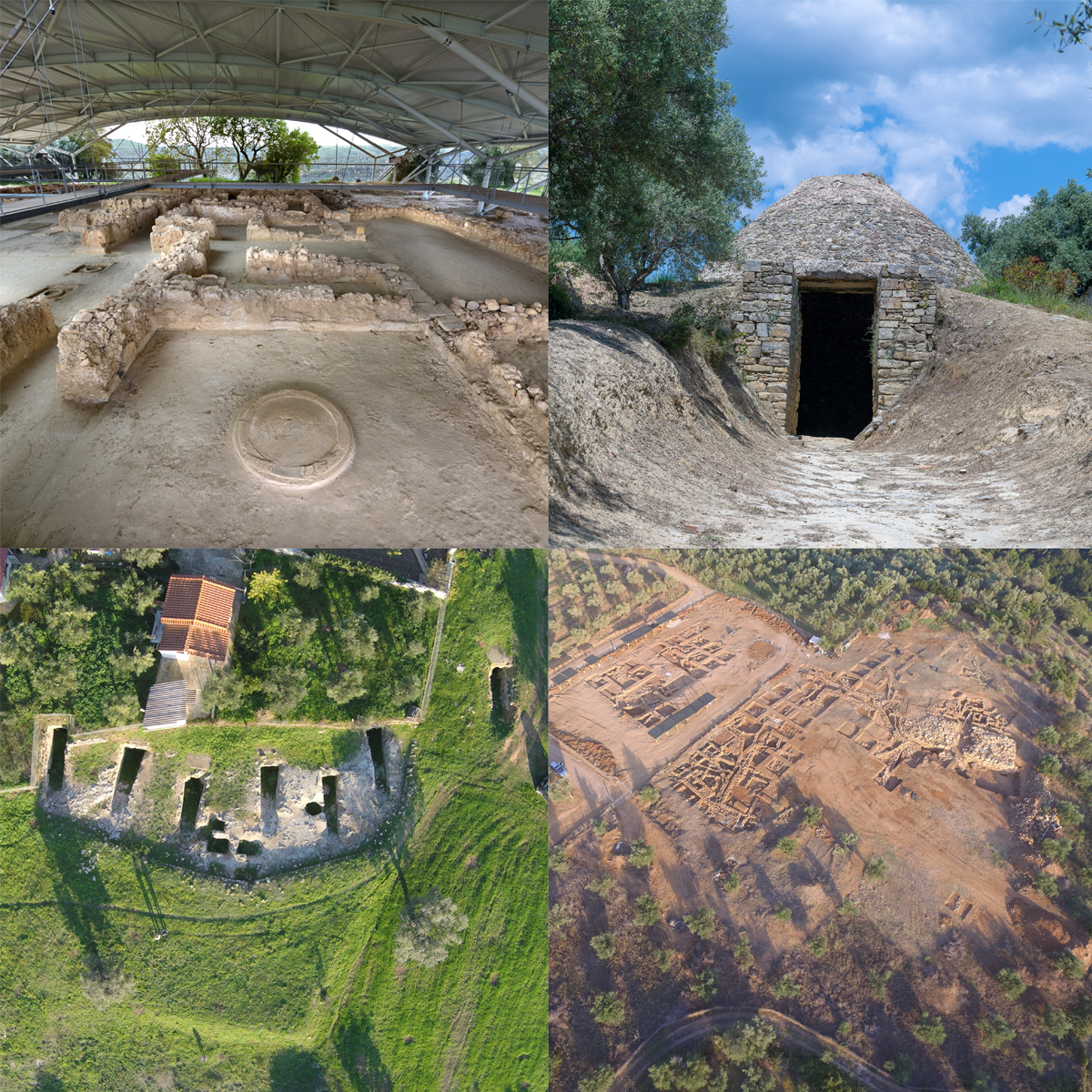The mycenaean palace at Ano Englianos, known as the “Palace of Nestor”, was the administrative centre of the mycenaean kingdom of Pylos, which flourished in the 13th century BC. The rising settlement centre of Pylos in Ano Eglianos gradually put under its control the local principalities that had developed at the beginning of the Mycenaean period in the wider area and the rulers who ruled them and who were buried with luxurious grave goods in tholos tombs, such as those at the sites of Englianos, Koryphasio, Tragana, Myrsinochori, Koukounara, Kaminia. The kingdom of Pylos gradually expanded its rule in the entire Messenia. The Linear B tablets found in the palace’s archive document a well-organised, hierarchically structured administrative system and an effective management of the agricultural production. The chamber tomb cemeteries at Volimidia and Kato Rouga, Chora probably belonged to settlements which gradually came under the control of the palace, while Iklaina was a smaller, but important, administrative centre. Artefacts found in the excavations of the palace and of the burial monuments of the region are exhibited mainly in the Archaeological Museum of Chora, as well as in the Archaeological Museum of Pylos and in the National Archaeological Museum in Athens.


